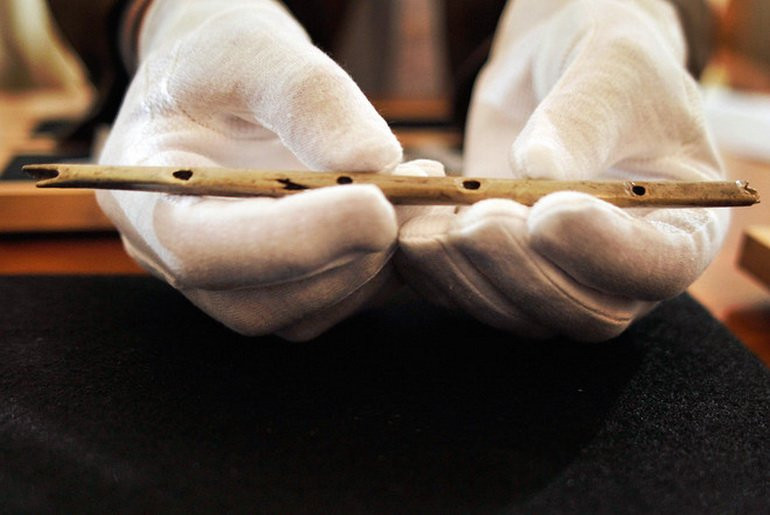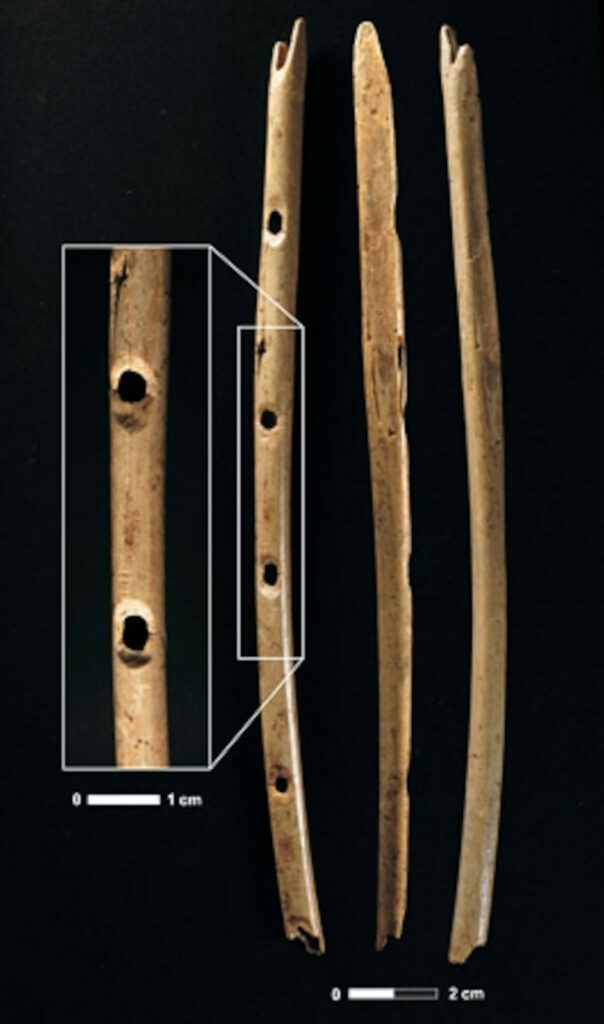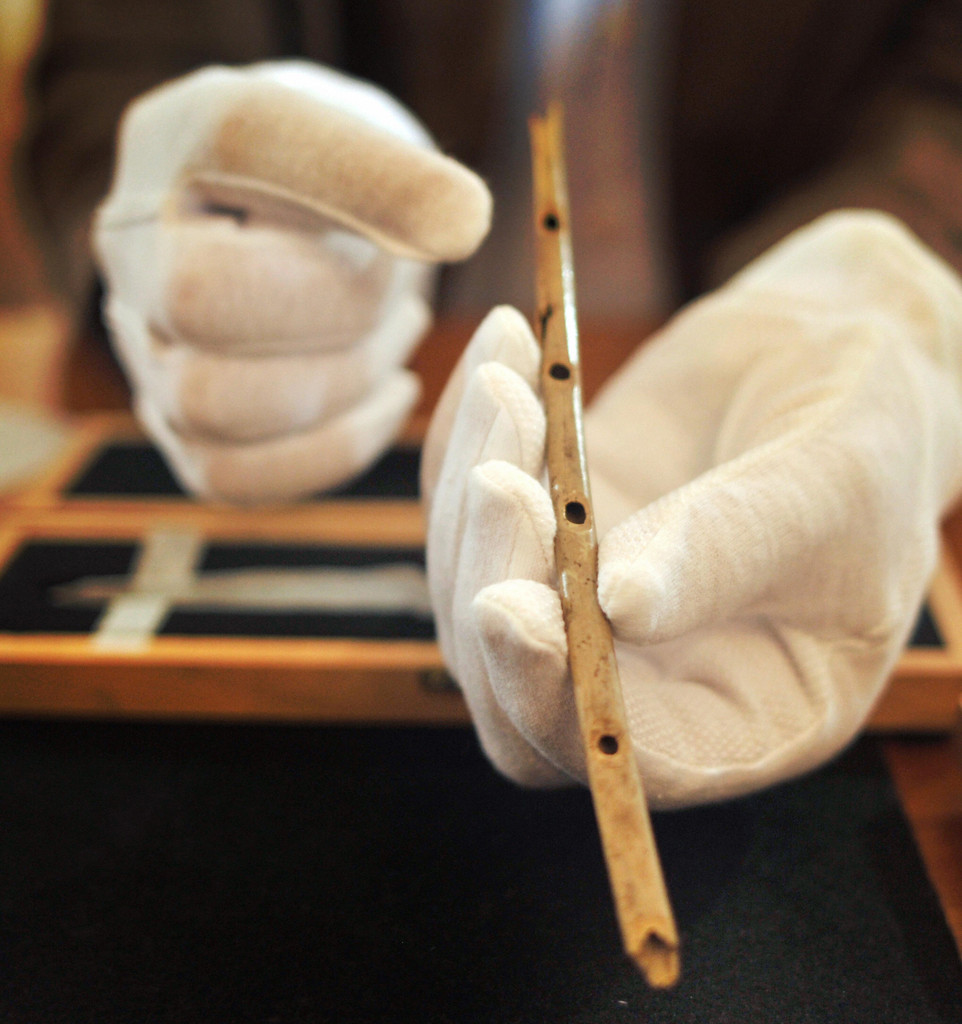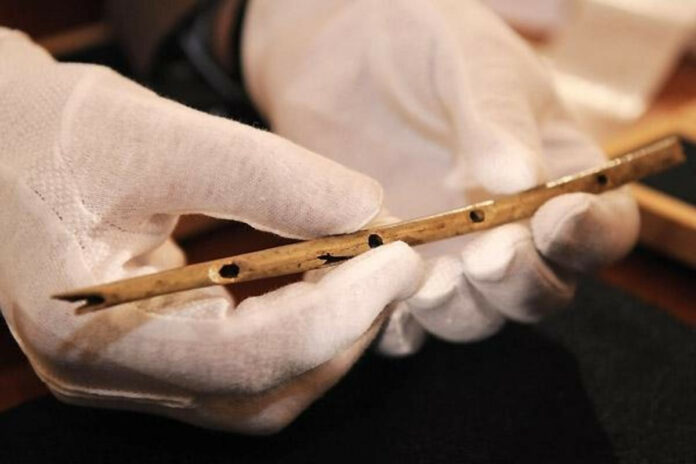Discovery of the Ancient Flutes

During the summer of 2008, a remarkable discovery was made at the Hohle Fels and Vogelherd sites in Germany. Archaeologists unearthed the remains of what is believed to be the oldest musical instrument in the world – a virtually complete bone flute and shards from three ivory flutes, dating back to the Paleolithic era.
The Bone Flute of Hohle Fels
Among the discoveries, the most remarkable was a nearly complete bone flute found in the basal Aurignacian layers at Hohle Fels Cave, located in the Ach Valley. Composed of 12 fragments scattered over a small area, this flute is undoubtedly the most intact musical instrument uncovered in the Swabian caves to date.
Craftsmanship and Materials
The preserved portion of the Hohle Fels bone flute measures 21.8 cm in length and 8 mm in diameter, with five finger holes intact. The flute’s surfaces and bone structure reveal intricate details about its creation. The maker carved two deep, V-shaped notches at one end to serve as the blowing end for the musician.

Remarkably, this flute was crafted from the radius bone of a griffon vulture, a species known for its impressive wingspan and suitable for creating large flutes. The Swabian cave deposits from the Upper Paleolithic period provide evidence of griffon vultures and other vulture species.
The Ivory Flutes
In addition to the bone flute, the 2008 excavations at Hohle Fels yielded two small shards believed to be from two separate ivory flutes. Another isolated shard of an ivory flute was discovered at Vogelherd, located 25 km northwest of Ulm.
Technological Complexity
Crafting a flute from bird bone was a relatively simpler process compared to creating one from ivory. Ivory flutes required a more intricate process, involving rough shaping along the long axis, splitting open along bedding planes, careful hollowing, and precise carving of holes. The two halves then needed to be joined together with an airtight seal, making these artifacts particularly fragile and prone to breaking into pieces.
Significance and Cultural Implications
Dating and Context
Radiocarbon dating places the flutes from Hohle Fels prior to 35,000 calendar years ago, making them the earliest known musical instruments in the world. These discoveries shed light on the significance of music in the Aurignacian culture of the Ach and Lone valleys in southwest Germany.
Music and Social Cohesion

The flutes were found in archaeological contexts rich in lithic and organic objects, animal remains, and other occupational waste, suggesting that music played a crucial role in the social and cultural activities of the people who lived at these sites.
The proximity of the bone flute to a female figurine of a similar age at Hohle Fels raises the possibility of a contextual connection between these two discoveries, further emphasizing the importance of music and art in the lives of the Upper Paleolithic peoples.
Music and Human Evolution

While the presence of music did not directly contribute to a more effective subsistence economy or greater reproductive success, it is believed to have played a role in enhancing social cohesion and new forms of communication. This, in turn, may have indirectly contributed to the demographic expansion of modern humans relative to the culturally more conservative Neanderthal populations.
These ancient flutes provide a glimpse into the rich musical tradition that emerged alongside early figurative art, personal adornment, and new technologies during the Aurignacian period, marking a significant milestone in human cultural evolution.

